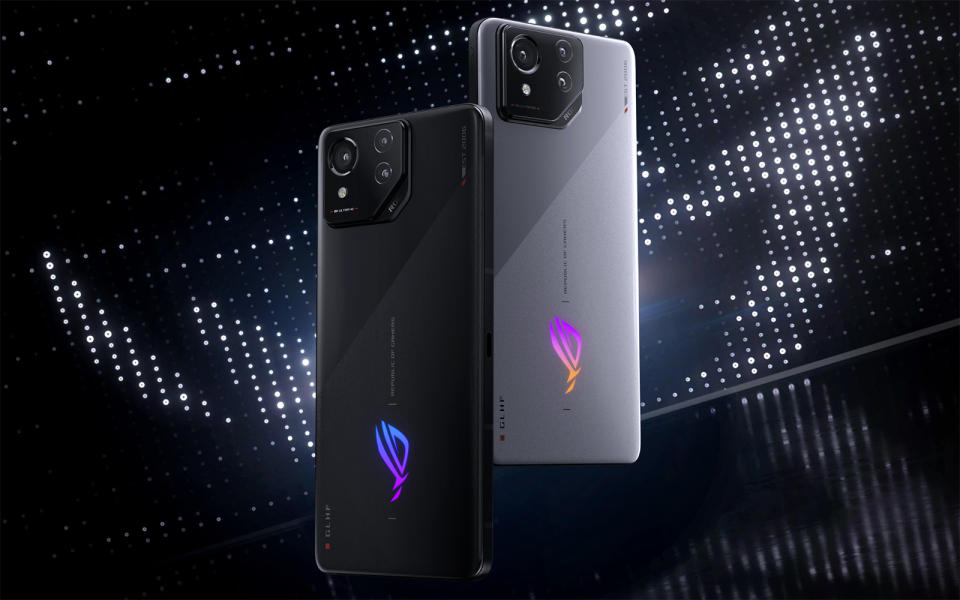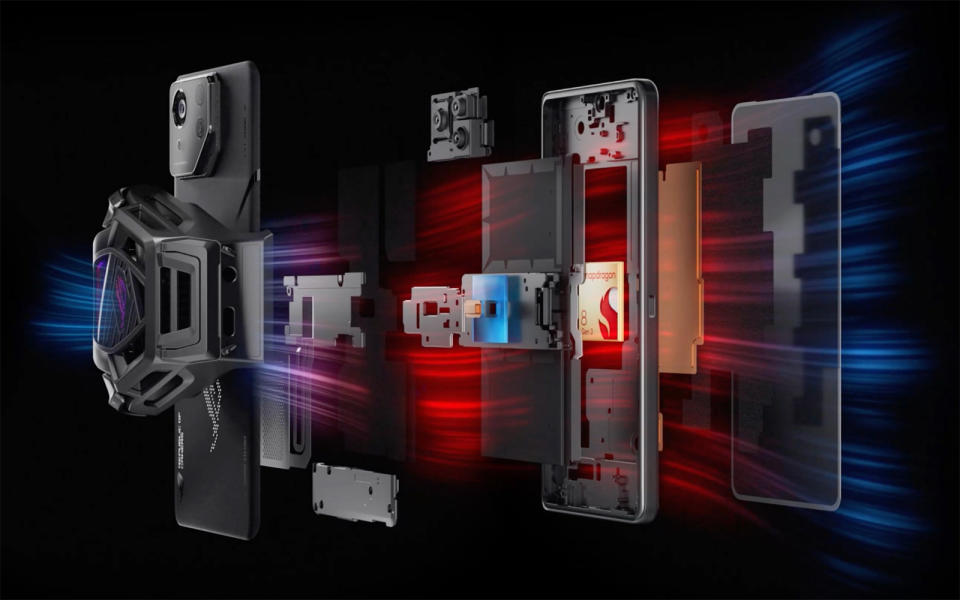For years, ROG Phone users had to put up with average camera quality for the sake of mobile gaming experience, and ASUS blamed it on cost reasons. To put it bluntly, it was either ROG Phone for gaming, or Zenfone for photography. Now that we’ve entered 2024, the Taiwanese tech giant finally has a change of heart. Announced at CES 2024, the ROG Phone 8 and 8 Pro essentially blend together the best of both worlds, featuring the usual trove of gaming aids in — at last — a brand new design, along with a set of significant camera upgrades derived from the Zenfone line.
Specifically, the new 50-megapixel f/1.9 main camera is powered by a more efficient Sony IMX890 sensor (featured on the OnePlus 11’s main camera, as well as the 3x periscope camera on Oppo’s Find X6 Pro and Realme’s GT5 Pro). More importantly, ASUS also brought over the Zenfone line’s 6-axis hybrid gimbal stabilizer, which further improves low-light shooting and offers a “Super HyperSteady” video mode.
The new 13-megapixel f/2.2 ultra-wide camera benefits from a free-form lens for reduced distortion. As for the third camera, the old 5-megapixel macro camera is now replaced by a more practical 32-megapixel 3x telephoto shooter, which comes with optical image stabilization and pixel-binning process (8-megapixel output) for boosted sensitivity. On the other side of the phone, the 32-megapixel selfie camera — now a punch hole on the screen — has gained a wider field of view, jumping from 73 degrees to 90.


Another significant change on the ROG Phone here is the appearance. In what ASUS calls the “Gen#3” design, the ROG Phone 8 has opted for compactness by way of reduced bezels (especially top and bottom), body thickness (from 10.49mm to just 8.9mm) and weight (from 239g to 225g). Thanks to this re-engineering, the company was also able to implement IP68 dust and water resistance here — apparently a first for gaming phones, thus making it even more suitable for daily use.
The ROG Phone 8 line comes in two looks. The regular model features a redesigned Aura RGB logo on the back, and comes in either “Rebel Grey” or “Phantom Black.” The more premium Pro flavor only comes in “Phantom Black,” with the main difference being its “AniMe Vision” powered by 341 white mini LEDs. This dot matrix display supports over 20 preloaded animations that respond to the likes of X Mode, incoming calls, powering on and more. You can also create your own custom animations, and should you come across a fellow ROG Phone 8 Pro user, tapping both phones together will unlock new secret animations. (In case you’re wondering, ASUS has confirmed that there will be no “Ultimate” edition this time.)
It should come as no surprise that the ROG Phone 8 series packs the top options available in terms of processor, thermal design and display. You get Qualcomm’s Snapdragon 8 Gen 3 chip paired with a “GameCool 8” advanced thermal system, which features a tiny rapid-cooling conductor to apparently boost thermal efficiency by up to 20 percent. (You can go even further by utilizing the new AeroActive Cooler X attachment, which is designed with a larger cooling chip at the sacrifice of two physical buttons.) Both are tucked underneath a Samsung E6 flexible AMOLED panel — it’s the same 2,448 x 1,080 resolution, 165Hz refresh rate and 720Hz touch-sampling rate as before, but now with a whopping 2,500-nit peak brightness (from 1,500 nits).


There are some small trade-offs, though. For one, the battery size has been reduced from 6,000mAh to 5,500mAh, but it still supports 65W HyperCharge which takes just 39 minutes. ASUS’s justification is the improved efficiency of the new processor as well as display, and that it saw the weight of the earlier ROG Phones being a major pain point. It also needed to squeeze out more space for the better (read: larger) camera modules. That said, this phone still somehow manages to add wireless charging support, which follows the Qi 1.3 standard.
Another slight downgrade lies within the audio department. What used to be two loud front-facing speakers are now one front-facing speaker and one downward-facing speaker, due to the reduction in the top and bottom bezels. Still, ASUS thinks Dirac’s tuning is able to compensate for this change. Speaking of, you also get Dirac Virtuo spatial audio for all headphones, be it wired (3.5mm or USB-C) or wireless (Bluetooth). As for phone calls, the ROG Phone 8 offers computational noise-cancelling for voice input across various scenarios — be it in-game communications, IM calls or regular phone calls.
ASUS’ signature AirTrigger pressure-sensitive buttons are here to stay, for obvious reasons. There’s also X Sense 2.0, an AI pattern recognition system for automatically detecting key events on screen, in order to provide timely prompts for the right moments. For instance, in Genshin Impact, this function will know when to trigger tools like auto pick up, fast forward, running lock and auto press-to-escape. Another AI feature — though not necessarily related to gaming — will be wallpaper generation, due to arrive in a future firmware update. This will leverage fast stable diffusion for creating images offline.
The ROG Phone 8 series will be available for pre-order in the very near future, with the base model (16GB RAM and 256GB storage) asking for $1,000 (actual retail price will cost an extra $100), followed by the $1,200 ROG Phone 8 Pro (16GB RAM with 512GB storage), and a more premium $1,500 ROG Phone 8 Pro Edition (24GB RAM with 1TB storage, plus an AeroActive Cooler X which normally costs $100). All models will come with at least two major OS updates (from Android 14), along with four years of security updates.
We’re reporting live from CES 2024 in Las Vegas from January 6-12. Keep up with all the latest news from the show here.

